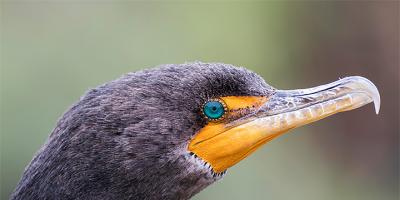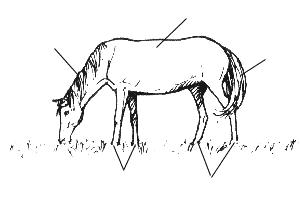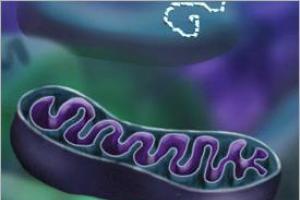When winter is in full swing, you really want to inhale the heady aroma beautiful flowers. This is quite simple to do - you just need to plant a hyacinth on the windowsill. Our article will tell you how to properly plant a hyacinth bulb in a pot at home.
So, it’s decided - let’s start growing hyacinths at home. But what will be needed for this? Of course, an onion, soil mixture, sand and small size pot - ceramic, plastic or even wooden.
Storing hyacinth bulbsHyacinth is a plant characterized by a fairly long dormant period, so you need to be able to preserve it before planting it in a pot. Hyacinth bulbs should be stored in a cool, dry place, checking from time to time to ensure they do not dry out. When the time for planting comes, and this will not be earlier than November, the bulbs must be carefully removed from the shelter and planting work can begin.
Preparing the pot for plantingLet's take the selected pot in our hands and put a drainage layer on the bottom. This could be gravel, broken shards from ceramic pots or expanded clay. Then we cover the drainage layer with sand, spreading it in a layer of 1.5-2 cm, and after that we fill the pot to the top with the soil mixture.
Planting workNow a few words about how to properly plant a hyacinth bulb in a pot. There is one very important point- unlike other bulbous plants that need to be completely immersed in the soil, one third of the hyacinth bulb should protrude from the ground. If several bulbs are planted in one container, then the distance between them should not be less than 2.5-3 cm.
Caring for hyacinth after plantingThe bulbs planted in this way need to be compacted a little, pressing the soil around them with your fingers, and then sprinkled with a thin layer of sand. After this, a mini-greenhouse is built above the pot from plastic bag, and this entire structure is sent to a cool, dark place for a period of 6-10 weeks. The soil in the pot should be watered from time to time. When the leaves hatch on the bulbs, the hyacinths can be moved to a room with a temperature of +10...+12 degrees. Hyacinths will respond to movement by dropping leaves and appearing flower stalks. After this, they can be transferred to a warm (+18...+20 C) room and patiently wait for the buds to open.
Hyacinth (Hyacinthus) is a beautiful bulbous plant from the Asparagaceae family that blooms in spring. WITH ancient Greek language The name translates as “flower of rains” because the hyacinth blooms with the first spring rains. But the Greeks also called it the “flower of sadness” and associated this flower with Apollo and the murder of the young son of the king of Sparta. The Mediterranean and Southeast Asia are considered the homeland of this elegant plant.
The flowering stem of hyacinth can be either short or quite tall. From the rosette of leaves emerges a succulent peduncle with numerous flowers that resemble bells and are collected in a racemose inflorescence. Flowers are presented in the most unexpected shades. The leaves are smooth, fleshy, bright green.

All possible hyacinths can be divided into three main types, which grow mainly in Mediterranean countries. Although botanists continue to debate regarding some varieties, wanting to designate them as independent, according to official data, only the following main types of hyacinths are distinguished:
Oriental hyacinth (Hyacinthus orientalis)- the most famous and widespread type. It is from this species that the most famous decorative varieties. It grows wild in Dalmatia, Greece and Asia Minor . The peduncle of the plant is thin, the flowers are located sparsely. The flowers have different colors and a pleasant aroma.
Hyacinth Litvinova– perennial herbaceous plant, which are cultivated more as an annual. In the wild, it is found in the eastern regions of Iran and Turkmenistan. Among this species there are both tall and short specimens. The flower is extremely beautiful. Blue, purple and greenish colors dominate. The leaves are slightly wider than those of the oriental hyacinth.
Hyacinth Transcaspian– has fairly tall stems, usually two peduncles. The color of the flowers is always light blue. In the wild, it is found in the Kopetdag mountains.

Hyacinth is first and foremost garden plant. If you want to grow it at home, you need to recreate natural conditions as much as possible. This task is not an easy one, but with due diligence and dedication, even a novice florist can cope.
Location and lighting
The best option is south and south-east windows. And the reason is a great love for sunlight. Hyacinth needs daylight - at least 15 hours a day. So, if you place it on the western or northern side, you will have to help the plant with fluorescent lamps.
Even if the plant loves light, direct sunlight can harm it, so on hot summer days it is better to shade the windows or remove the plant from the windowsill during the day. The pot with the plant periodically needs to be turned in different directions.
Temperature
A sharp change in heat and cold, drafts, hot radiators - all this negatively affects the flower. The most suitable temperature for comfortable growth of hyacinth is 20-22 degrees Celsius. But, given that this flower is primarily positioned as a garden flower, being on the street or balcony in the warm season will only benefit it.
Watering and air humidity

The plant needs regular but careful watering. Watering must be done very carefully. If water gets on any part of the plant, this part may begin to rot and as a result the hyacinth will die. A safe option is to water by immersion, and it is better to avoid watering cans. The water should be warm, soft and settled.
Hyacinth does not need spraying. And when it blooms, it is generally contraindicated!
The soil
The optimal soil composition for hyacinth will be a substrate of leaf soil, humus, peat, turf soil and sand. All this must be mixed in equal parts.
Feeding and fertilizers
Hyacinth constantly needs feeding. Any universal fertilizer can be used as a fertilizer. indoor plants. For hyacinths in the garden, you can apply fertilizers both dry and dissolved. But before use liquid fertilizers The plant must be watered.

To receive in the future beautiful flower, hyacinth bulbs should only be purchased in trusted specialized stores. When purchasing bulbs, you need to carefully inspect them and make sure that they are not damaged or diseased. A healthy plant will grow only if the bulb is elastic and smooth, which has a clear neck and shoulders. In most cases, the color of the scales and bulb matches the future inflorescence. The quality of the bulb is not always indicated by its size, however, if its diameter is within 5 cm, this is a good indicator. Best time to buy bulbs - end of summer.
If you are planning to buy already mature plant, you need to carefully examine the leaves and stem of the hyacinth. The stem should stand straight, the leaves should also look up, and the peduncle should not be tilted.
How to get flowers at the right time
In order to get a gorgeous peduncle from a bulb, you need to provide the plant with the coolness of real autumn. During this period, the temperature should be within 5-9 degrees Celsius. This can be achieved by sending the plant to the basement or to the bottom shelf in the refrigerator. And to enhance the effect, the bulb in the soil can be wrapped in an opaque bag. Of course, care during this period is kept to a minimum. Surprisingly, these are the conditions that are optimal for active growth hyacinth. This usually lasts for 2 months.
When a sprout appears (about 5 cm), the plant needs “spring”, that is, the temperature regime needs to be changed to 13-15 degrees. It must be kept at this temperature until the first buds appear. And with their appearance, hyacinth needs a temperature of 20-22 degrees Celsius. The temperature transition must be smooth, otherwise the flower may die or look sick.
Caring for hyacinth after flowering
After flowering, during the dormant period, the most important thing for hyacinth is the correct temperature regime. Watering should be done moderately. When the hyacinth fades and its leaves fade, it's time to start working on the bulb. The peduncle and leaves should be trimmed and the bulb dug up. This usually happens in June.
The bulb must be carefully examined if there is a need (or for preventive purposes) to be disinfected. And then, changing the temperature from 30 to 17 degrees, store it until autumn planting.
Planting hyacinth in a pot at home

When planting hyacinth, it is allowed to place up to 3 bulbs in one pot (their sizes are taken into account). The bulbs must not come into contact with the walls of the pot and with each other - there should be 2 cm between them. The pots should be of medium size. Drainage must be poured into the bottom of the pot - this can be river sand, which should occupy 2 cm in the pot. The top of the bulb should be raised above the soil. After planting, the substrate must be pressed, watered and sprinkled with sand. Then the pot needs to be placed in a bag, tied, but first make several holes in it and put it in a cool, dark place.
Some people grow hyacinths without soil in water. This is quite real way, but a prerequisite is mineral fertilizers dissolved in water. The hyacinth bulb should be on the surface of the container, only lightly touching the water. She should be in a dark, cool room for some time. And with the appearance of roots, the plant should be moved to a bright room.

There are several ways to propagate hyacinths. Relevant at home: baby bulbs and scales. In a natural way, you can get a maximum of 5 babies from one bulb during the growing season. To achieve maximum results, use the onion cutting method. The process requires changing temperature conditions and regular fungicide treatment. But if you do everything correctly, then after 3 months small baby bulbs are guaranteed to appear.
Diseases and pests
The main pests of hyacinths: aphids, thrips, spider mite, stem and root-knot nematodes, flower flies. They can destroy the plant - the leaves turn yellow, wither, the buds fall off, the bulbs become rotten and rot. Each individual case has its own methods of control, but most of them involve the use of insecticides.
In addition to pests, hyacinths become enemies various diseases, which can be non-infectious, infectious, viral, bacterial and fungal in nature. The most common and dangerous are bacterial yellow rot and soft bacterial rot. The leaves of a diseased plant turn black and dry out from the top. Watery and brown streaks appear along the veins of the leaves and on the peduncle. Yellow spots first appear on the bulbs, and then the entire bulb rots and begins to emit a stench. Such a plant cannot be saved. The diseased plant and bulb should be burned, and the hole should be treated with formaldehyde or bleach.

If hyacinth is not properly cared for, the following problems may occur:
- Hyacinth stops blooming. This is usually associated with a violation temperature regime. The plant does not like too high temperatures.
- The leaves of the plant turn yellow. Most often this happens due to improper watering or drafts.
- Leaves wither. This happens due to lack of natural light.
- The buds are falling. This is due to improper watering. It must be carried out carefully so that water does not fall on the peduncle.
- The flowers are rotting. This happens when the plant is “loved” too much (watered too much).
Hyacinth is enough unpretentious plant. If you follow proper care at home, there will be no particular cause for concern. It can be successfully grown by both experienced and novice amateur gardeners.
Video - how to grow hyacinth at home
Articles on the topic

Add site to bookmarks
Correct fit hyacinths at home
Hyacinth is a perennial bulbous plant. Planting hyacinths at home has become widespread. Pleasant to the eye bright flowers a variety of colors: white, pink, burgundy, purple, lilac. Particularly attractive are hyacinths with bright flowers that bloom in winter or in early spring when most other plants are dormant.
Hyacinths are beautiful perennial flowers that bloom in winter or early spring.
Preparing to plant hyacinths
By choosing the time to plant the bulbs for forcing, you can achieve the desired flowering time of the hyacinth. If you plant the bulbs before mid-September, they will most likely produce flowers in time for the New Year. To get flowers by the beginning of spring, it is better to plant in the first days of November. The exact time depends on the variety and forcing conditions. It is not recommended to start forcing hyacinth before September. To grow hyacinth at home, it is very important to correctly select the bulb for forcing. You need to choose a bulb that is dense to the touch, large enough (5 cm or more), without external damage, without signs of rot or other diseases.
To prepare the bulbs for forcing yourself requires some experience. Therefore, it is better to use store-bought bulbs for planting hyacinths at home. Preference should be given to large, trusted stores specializing in the sale of flowers.

Before planting, the bulbs should be stored in a dry, dark place at temperatures up to +18°C.
You can plant hyacinth in a pot or any medium-sized container. You can use various bowls and boxes. The main condition is the presence of a drainage hole. Drainage must be placed at the bottom of the container, in a layer of about 2-3 cm. Fine expanded clay or sand will do. Nutrient soil is poured onto the drainage. Choose mixtures with neutral acidity. You can use leafy, turf soil with a small addition of peat and sand. A ready-made earthen mixture purchased in a store will do.
Return to contents
How to plant bulbs
Next, the bulbs are planted. Usually 1 - 3 bulbs are planted in one container. It is allowed to plant more bulbs, depending on their size and the size of the container. Do not allow the bulbs to come into contact with each other or with the walls of the pot, maintaining a distance of about 2 cm. There is no need to completely cover them with soil. It is necessary to leave about a third of the height of the bulb above the surface. Sprinkle a little sand on top to prevent rotting. If the top of the bulb is slightly lower than the edge of the pot, the flowers will look neater.
Then the container with the bulbs is covered with polyethylene, in which several holes are made to maintain ventilation. Next, the pot is placed in a cool, dark place. You can cover it with an opaque material and take it to a cool room or put it in the refrigerator. Periodically you need to check that the soil in the pot does not dry out. If necessary, it should be moistened. You should also not overwater the soil.

The cold period is a prerequisite in the process of forcing hyacinths. It is important to maintain the room temperature no higher than 5-7°C. During this period, plant rooting occurs.
In such conditions, the bulbs are kept for 8-12 weeks. During this time, the first shoots appear. Now the containers with flowers are transferred to a warmer, but not hot place, maintaining the temperature no higher than +15°C. Usually within one week the arrow grows and buds form. After the buds appear, the flowers are transferred to permanent place With good lighting, protected from drafts, heat and direct contact sunlight. At the same time, carefully ensure that the soil remains moist. Water the plant carefully, avoiding water getting on the bulb and base of the leaves. Feeding and additional lighting have a good effect. For uniform growth, you can periodically rotate the pot. Soon bright fragrant flowers bloom. The average flowering time for hyacinth is 1-2 weeks.
Hyacinths are very beautiful plants with bright and colorful flowers that look like little bells. Flowers can be simple or double with a variety of colors, have a pleasant aroma and an early flowering period. This is a garden plant, but if you create conditions close to natural, you can successfully grow hyacinths at home.
Hyacinth is interesting because it can be grown both in garden conditions, and at home. But it cannot constantly grow in some container and delight you with flowering. During the forcing process, the bulbs are greatly depleted, and they do not have enough strength to flower again. Therefore, it is necessary to buy bulbs that have already been prepared and have gone through a dormant period. If all conditions are correctly observed, you will receive wonderful fragrant hyacinth inflorescences.
When to plant hyacinth at home?
More often flowering plant They expect to receive it by a certain holiday or date. On average, 14-15 weeks pass from planting to flowering, so you need to calculate this period in advance and start planting the plant on time.
How does hyacinth grow at home?

The plant grows best on windows facing south or southeast because it loves the sun very much. During the day, the flower must be under lighting for at least 15 hours, in winter time You can additionally illuminate the hyacinth using fluorescent lamps.
But, despite all the plant’s love for light, it must be protected from direct exposure. sun rays, so in the midst of a sunny day it is better to remove the flower from the window or shade it with something. To prevent the plant from leaning to one side, it must be rotated periodically.
The temperature should be from 20 to 22 degrees, there should be no sudden temperature changes or drafts.
You can also grow hyacinths without soil - in water. This method is called hydroponics. Dissolved mineral fertilizers must be present in the water. You need to make sure that the onion is only partially immersed in the container - bottom side. At first, the plant is placed in a dark and cool place, and when roots appear, it is transferred to a bright room.
Breeding hyacinths at home
Thanks to the success of breeders, at this stage time, there are many varieties of hyacinths. Many of them can be grown at home. All home hyacinths belong to the same species - oriental.
To grow beautiful and healthy hyacinths at home, you need to properly prepare:
- choose quality planting material;
- select the appropriate container;
- buy or prepare the soil.
It is recommended to use healthy bulbs, without damage or rot, with a diameter of at least 5 centimeters; it is advisable to take them from a specialized store. A small bulb may not bloom in the first year. It is best to purchase bulbs at the end of summer, after a natural dormant period.
Before planting, it is necessary to treat it with special disinfectants.

Next, you need to choose a suitable container for planting. It shouldn't be very deep. It doesn’t matter what material it’s made of, as long as there are drainage holes.
The soil can be purchased at the store (but it should not have an acidic environment) or you can make it yourself by mixing components such as turf, compost, leaf soil and humus in a 1:1 ratio, and adding a little peat and sand.
Hyacinth must be constantly fed and fertilized. An all-purpose fertilizer for houseplants is perfect for this.
How to plant hyacinths at home?
A drainage layer of expanded clay is poured onto the bottom of the container. Lay out a small layer of soil and cover with a thin layer of sand. One or several bulbs are placed on the sand to form a whole bouquet of flowers.
When placing several bulbs, you need to make sure that they do not come into contact with each other or with the container.
Gently press the bulbs into the ground and cover them with soil; the top of the bulb must remain exposed to the air, one and a half centimeters. You can cover the top with a thin layer of sand, this will protect the plant from rotting.
After planting, you need to moisten the soil, wrap the container in an opaque bag and place it in a cold room, for example, a cellar or garage, it can also be a refrigerator. The bulb should be kept in the cold for 6 to 10 weeks. The temperature should not be higher than 5 degrees and there should be no lighting at all.
For hyacinth, such conditions serve as an imitation of winter; without them, it will not be able to bloom. During this period, care is kept to a minimum; you only need to occasionally remove the plant and check that the soil does not dry out.
As soon as a sprout appears, no more than 5 cm high, the plant must be moved to a bright or more warm room, create a “spring” effect. There the flower remains until the first buds form, then raise the temperature to 20-22 degrees. The change in temperature must be smooth, otherwise the plant may get sick and not bloom.
How to care for hyacinths at home?

Hyacinth is an unpretentious plant and proper care it can be grown by gardeners of varying skill levels.
At improper care behind hyacinth, the following problems may arise:
- The flower stops blooming. Most often this is due to unsuitable temperature conditions.
- . This can happen due to improper watering or due to drafts.
- Wilting of leaves. With a lack of natural light.
- Falling buds. This is due to improper watering.
- Flower rotting. This happens when watering too often or too much.
Hyacinth: how to water at home?
You need to ensure that the soil around the bulb does not dry out. It must be watered regularly and carefully, and care must be taken to ensure that water does not get on the plant itself (leaves, flowers), as this can cause them to rot. Water should be poured onto the edge of the container or into a tray. Excess water must be poured out to prevent rotting of the root system. Water should be settled or filtered, at room temperature.
The plant does not need spraying.
Once every two weeks, feed the flowering plant with liquid complex fertilizer for flowering plants, according to the instructions.
[Ratings: 7 Average rating: 3.9]
Stately and spectacular hyacinth is a real decoration of the garden in early spring. Appearing one of the first in the flowerbed, when there is still snow in places, it delights those around with large and fragrant flowers of the most diverse range of shades and shapes. Such splendor on a miniature scale can easily be repeated in winter, delighting yourself, your loved ones and friends with a magnificent gift for the New Year or Christmas. About how to force a plant at home - recommendations in our article.
Hyacinth: botanical description
Hyacinth is a genus belonging to the Asparagus family and includes only three species. They all have characteristic appearance and fragrant flowers. The plant's bulb is dense, consisting of fleshy leaves, the bases of which occupy the entire circumference of the bottom. The stem is thick and dense, with an inflorescence at the top. After flowering ends, it dies off along with the leaves along with it. Very fragrant flowers are collected in a raceme, the perianth is brightly colored, in the form of a bell-shaped funnel with bent blades. The fruit is a three-lobed capsule. Three species are known: Hyacinthus transcaspicus, Litvinova and eastern. The most common and famous is the latter, which has become the basis for the development of many varieties and hybrids. It is possible to care and plant hyacinth at home in a pot or in open ground.
Eastern hyacinth: description
It is generally considered type species kind, that is, acting as a nomenclature. If any controversial situation arises, he acts as the only bearer of the generic name from an objective point of view. The plant's homeland is the Mediterranean and, however, at the moment it is cultivated everywhere not only for decorative purposes, but also for medicinal purposes. The plant is perennial, bulbous, up to 30 cm high and stele up to 0.5 cm thick, the leaves are fleshy, linear, and have a bell-shaped flower. at home it is quite simple to care for; it blooms in early spring and is one of the first in the garden. It became especially popular in culture in the 15th century in Europe; since then, more than three hundred high-quality and proven varieties have been bred. The Netherlands, especially the Haarlem region, is famous for the cultivation of hyacinths, from which millions of bulbs of these flowers are supplied to the world market every year.
Popular varieties

It is difficult to say in a few sentences about the huge range of hyacinth varieties. When choosing one of them for your home or garden, pay attention to the manufacturer, seller, as well as botanical characteristics (height, flowering time, suitability for forcing, etc.). Planting and caring for hyacinths at home involves choosing a specific hybrid. We offer a conditional division of varieties according to flower color.
- White: Argentina Arendsen (up to 28 cm, individual flower diameter up to 4 cm), L "Innosance (early old variety, created in Holland in 1863, height up to 26 cm), Carnegie (medium height - up to 22 cm, inflorescence cylindrical), Edelweiss (medium early, up to 25 cm, with a wide brush).
- Pink: Anna Marie (late, up to 25 cm high), Fondant (industrial variety with large 20 cm inflorescences, photo above), Pink Pearl (early, cone-shaped inflorescence with characteristic long bracts), China Pink, Marconi.
- Blue: King of the Blues (old Dutch variety 1865, late, pictured below), Delft Blue (up to 20 cm, suitable for forcing, long flowering period), Maria (up to 25 cm, deep blue, one of the most common hybrids), Myosotis (early, pale blue).
- Purple: Amethyst (short flowering period, unpretentious, pale lilac hue, height up to 25 cm), Bismarck (early, up to 30 cm light purple inflorescence, ideal for forcing and cutting), Menelik (purple-black, compact, late) .
- Yellow: City of Haarlem, Orange Boven, Yellow Hammer.

Lush, spectacular flowering, bright colors and a unique thick and rich aroma - these are the main reasons why in the pot. Care at home is quite simple, but requires forcing, which results in some peculiarities. As a rule, people try to get a flowering plant for a certain holiday: New Year, March 8, etc.
What is forcing?
This process involves comprehensive measures to accelerate plant growth. It is widely used in greenhouse cultivation and floriculture. The plant is placed in conditions with elevated temperatures environment, humidity and additionally illuminated, thereby stimulating them to active development, flowering and fruiting. This is how tulips, daffodils, lilies and hyacinth are grown in a pot at home. How to preserve the plant after such a procedure, read further in the text.
Selection of bulbs

In essence, forcing mobilizes all the forces of the plant and allows you to get beautiful flowers in a short time. Only healthy and strong specimens can withstand this. Choose high-quality planting material, large, dense bulbs without damage, grown in open ground. Pay attention to the weight; it should not be too light and give the impression of emptiness inside. In addition, as mentioned above, it makes sense to pay attention to the variety; there are hybrids specifically designed for forcing.
Preparing bulbs for planting
The preparation of hyacinth bulbs begins in the summer, at the moment when you decide that you will grow hyacinth in a pot (home care - below). As soon as the foliage withers, the planting material must be dug up and washed in warm water and dry in a draft in a shady place, and then store in a cool and dry basement or cellar. Experienced flower growers know one secret. As soon as hyacinth flower stalks appear in the flowerbed in the spring, they notice the largest and most powerful ones, but they are not allowed to bloom and are cut off. This allows the plant to devote all its strength to the development of the bulb, which can then be successfully driven out in the winter.
Landing dates

The timing of planting bulbs in the ground depends directly on when exactly you want to get blooming hyacinths on your window. Care and cultivation at home in the future are quite simple; it is important to do everything correctly at the initial stage. Cooling period for distillation in early dates is 10-13 weeks, for late varieties it increases to 12-16. The start date can be set as follows. Determine the day when you need to get the flower and subtract the number of established weeks from it in reverse order, plus another 3-4 for growth for early and late varieties, respectively.
In order to strengthen the immune system, the bulbs should be placed for 30 minutes in a solution of potassium permanganate or the drug “Hom” (concentration - 4 g per 1 liter of water) before planting.
Planting bulbs
In accordance with the planned flowering time in the fall, soil bulbs should be planted in soil (purchased or prepared independently). Use individual pots or group planting - depending on your own preferences. Hyacinth in a pot requires minimal care at home, but its flowering is magnificent. Fill the pots with soil almost to the top, then plant the bulb so that its top is level with the edges of the container. When planting in groups, maintain a distance of 2.5-3 cm. Cover the top of the pot with dark polyethylene, making holes for ventilation. Move the plants to a dark and cool place for a set period of time; the temperature should be between 5-8°C.

As the earthen ball dries, lightly moisten it; the soil should be slightly moist. During this time, small sprouts appear on the hyacinth; when they reach 3-5 cm in height, the plants should be brought into the house. The initial temperature should not exceed 12°C; choose a shaded place for a few days, and then move them closer to the window (but not to radiators). The pot is placed in a permanent place at the moment when buds appear on the plant.
Hyacinth in a pot: care at home during flowering
In order for a plant to please you with beautiful flowering, it needs to be provided with stable conditions. After the buds appear, the pot with hyacinth is moved to a permanent bright place, protected from drafts. The temperature should be between 15-20°C, keep the soil constantly moist, not allowing it to dry out. Carry out one-time feeding with complex mineral fertilizer, strictly observing the dosage and concentration indicated on the package.

What to do with the bulb after flowering?
The hyacinth bulb used for forcing cannot be reused. However, you can plant it in open ground in a flower bed in the garden, where it will delight you with natural flowering in early spring. After the forcing is completed and the desired result is obtained, leave the bulb in the ground - this is necessary in order to preserve the flower. Hyacinth care in a pot at home requires the same care as in the ground. Continue watering the plant and feeding it with fertilizer until the leaves begin to wilt. Once they are dry, carefully separate them. Remove the bulb from the ground, dry it and store it in a cool and dry place. Plant in the ground late autumn: mid to late October, when soil temperatures drop to 5-10°C. Thus, the hyacinth will have time to take root before severe cold weather.
Remember that the plant prefers sunny and open place, possibly with light shading, protected from wind and excess moisture. The soil is recommended to be loose, containing sand, humus, and having good moisture permeability.








